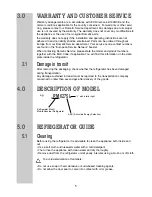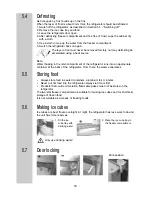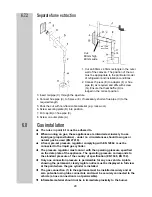
19
Draught-free installation
Your refrigerator must be sealed in accordance with EN 1949.
Illustrated below are two typical approved methods of sealing.
Proposal 1:
Insert lipped seals (A) into the installation reces-
ses at the bottom and at each side.
Insert deflector plate (B), fitted with a lipped seal
(A) of heavy-duty, non- flammable material, into
the installation recess (see Fig. 1).
Insert deflector plate (B) in such a way that the
hot air escapes through the air vent grille into the
open air.
Affix the discharge plate to the caravan wall, not
to the refrigerator!
In addition, discharge plate (B) with its lipped seal
(A) must seal the refrigerator off from the living
area (see Fig. 1).
Ensure that the refrigerator is installed level in the
recess.
Proposal 2:
Another option is to provide the refrigerator with a cowl
(A). The cowl (A) should ideally be affixed to the caravan
wall, not to the refrigerator. Insert sealing strips at the bot-
tom and sides of the cover.
Finally, push the refrigerator into the cover from the front.
Both of these installation options facilitate the removal
and installation of the appliance for servicing.
Comment:
Other methods of sealing may be approved. However the
chosen method must prevent draughts entering the living space of the motorhome.
Failure to seal correctly will allow warm air to collect around the refrigerator and its
performance will be affected.
If the cavity between the caravan wall and the refrigerator is sealed so that fumes
cannot penetrate the living area it is possible to vent the flue gas directly through the
upper grille without using the aluminium flue pipe. For this installation method, it is
recommended that the same air vent grille should be used at the top and at the
bottom (L200), and that the T-piece of the flue pipe is turned 45 degrees.
6.2
Fig.1
Summary of Contents for RM6275L
Page 17: ...17 Declaration of conformity 5 19 ...
Page 27: ...27 Wiring diagram 6 9 3 ...










































